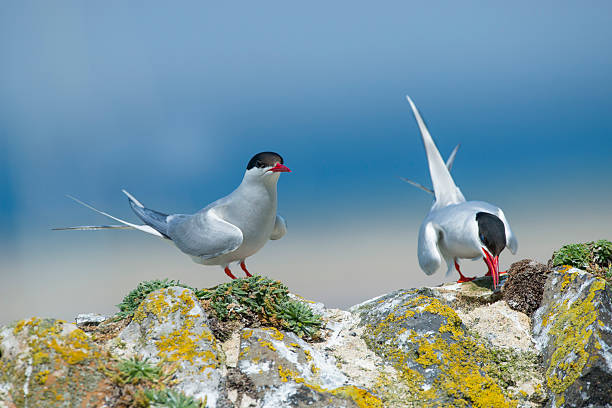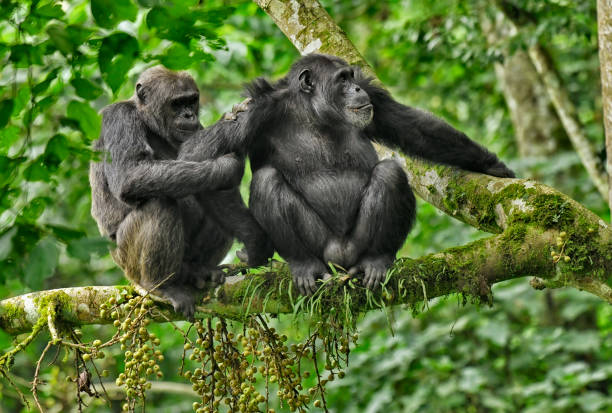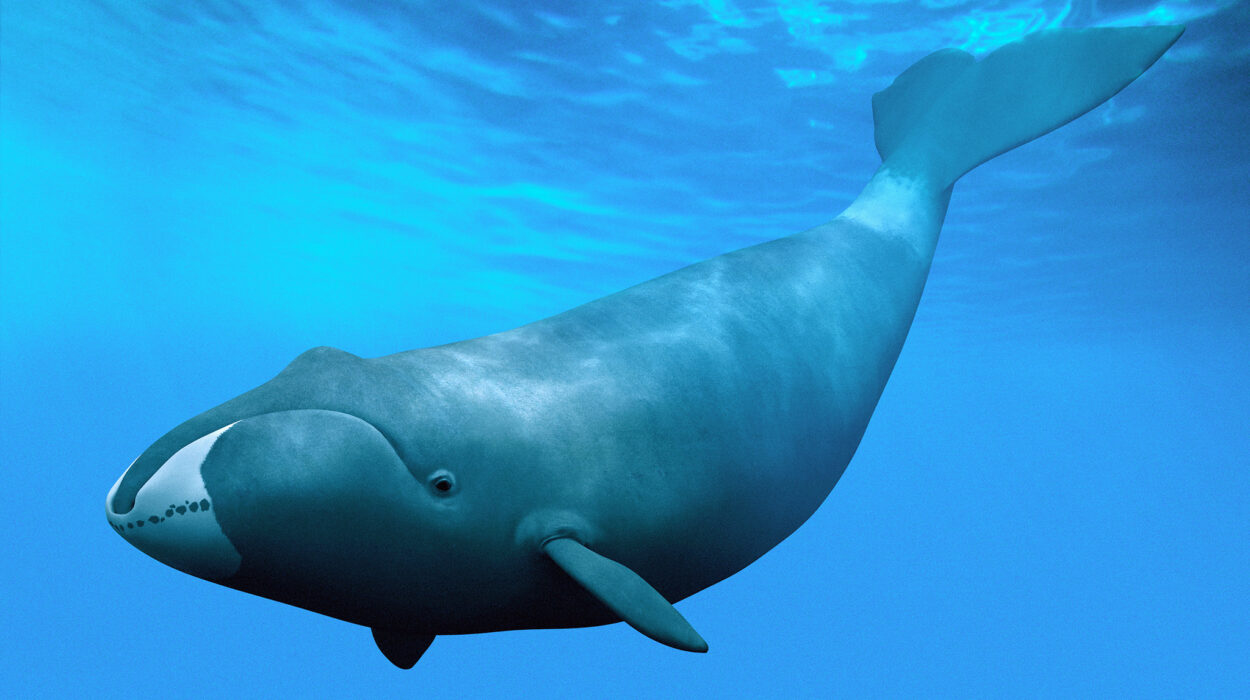Every year, the skies above us turn into invisible highways—routes stretching across continents and oceans, pulsing with wings in motion. It’s a journey so ancient, so extraordinary, that it seems almost mythical. Millions of birds embark on migrations that defy the limits of endurance, crossing deserts, mountains, and endless seas guided by instincts older than civilization itself.
Migration is not merely a movement—it is survival in motion. It’s the eternal rhythm of the Earth expressed in flight, where each wingbeat is a note in nature’s greatest symphony. Some birds travel just a few hundred kilometers, but others journey halfway around the world, braving storms, predators, and exhaustion to follow the path of the sun.
Among these avian adventurers are a few extraordinary species whose migrations stretch the very definition of endurance. Their stories are filled with courage, mystery, and awe. These are the 12 birds that migrate the farthest—a living testament to nature’s boundless ambition.
1. Arctic Tern – The Ultimate Traveler
The Arctic Tern is the undisputed champion of migration. No other creature on Earth travels as far, as consistently, or as beautifully as this elegant seabird.
Each year, the Arctic Tern completes a round-trip journey from its breeding grounds in the Arctic to its wintering grounds in Antarctica—a staggering distance of around 70,000 kilometers (43,500 miles). That’s nearly twice the circumference of the Earth.
What’s astonishing is not just the distance, but the precision. The terns navigate this immense journey with remarkable accuracy, returning to the same nesting spots year after year. They chase the summer, experiencing more daylight than any other species on the planet.
Their journey is not random—it’s perfectly timed to exploit rich feeding grounds along the way. Scientists believe they use the Earth’s magnetic field, celestial cues, and even their sense of smell to navigate. These birds, small enough to fit in your hand, perform a migration so vast it defies imagination.
Each time an Arctic Tern spreads its wings, it is rewriting the limits of life on Earth. Over a lifetime, a single tern may travel the equivalent of going to the Moon and back three times—a feathered astronaut of the natural world.
2. Bar-Tailed Godwit – The Endurance Marathoner
If the Arctic Tern wins for distance, the Bar-Tailed Godwit wins for stamina. This long-legged shorebird holds the record for the longest nonstop flight of any bird on Earth.
In 2020, a tagged Bar-Tailed Godwit flew from Alaska to New Zealand—12,200 kilometers (7,600 miles)—without stopping for food, rest, or water. The journey took 11 days of continuous flight.
To accomplish this, the godwit undergoes one of nature’s most incredible physical transformations. Before migration, it doubles its body weight, storing energy as fat. Its organs shrink to make room for fuel reserves, and its blood becomes more efficient at carrying oxygen.
Then, when the moment arrives, it launches into the sky and doesn’t stop until it reaches its destination across the Pacific Ocean. No land, no islands—just endless blue beneath and an unerring sense of direction.
It’s an epic odyssey of pure endurance, proving that nature’s design can achieve what no machine could match.
3. Sooty Shearwater – The Global Voyager
The Sooty Shearwater is a master of the wind and waves—a dark, sleek seabird that glides effortlessly over oceans that most creatures never cross.
Every year, this bird travels an astonishing 64,000 kilometers (40,000 miles) in a giant figure-eight pattern across the Pacific Ocean. It breeds in New Zealand, Chile, and the Falkland Islands, then migrates to the North Pacific near Japan, Alaska, and California before returning home.
The Sooty Shearwater’s journey is synchronized with the ocean’s productivity. It follows plankton blooms and schools of fish, timing its route to maximize feeding opportunities.
They ride the wind with breathtaking efficiency, using dynamic soaring to travel thousands of miles without flapping their wings. It’s a form of flight so efficient that they seem to dance with the ocean itself, dipping low to catch wind currents rising off the waves.
Their migration connects hemispheres and ecosystems, linking the poles of the world through the rhythm of the sea.
4. Short-Tailed Shearwater – The Australian Traveler
Cousin to the Sooty Shearwater, the Short-Tailed Shearwater, also known as the “muttonbird,” performs one of the great migrations of the Southern Hemisphere.
These birds breed in Australia and Tasmania, then journey north across the Pacific to feeding grounds in the Arctic Ocean near Alaska and the Bering Sea. The round trip covers about 30,000 kilometers (18,600 miles) annually.
Their migration is not only impressive for its distance but for its synchronicity. Millions of Short-Tailed Shearwaters depart at once, darkening the skies in immense flocks that stretch for miles.
The journey is perilous. Many face storms, exhaustion, and threats from human activity at sea. Yet they continue their annual pilgrimage, driven by an unbreakable instinct—a reminder of how migration is both miracle and struggle intertwined.
Their return each year to the same burrows in Tasmania is a powerful symbol of continuity in nature’s ever-turning wheel.
5. Red Knot – The Tiny Globe-Trotter
The Red Knot may be small, but its migration is monumental. This robin-sized shorebird travels from the Arctic tundra to the southern tip of South America—a journey of over 15,000 kilometers (9,300 miles) one way.
What’s truly extraordinary is that Red Knots time their migration with ecological precision. When they arrive on the shores of Delaware Bay in the United States, it coincides perfectly with the spawning of horseshoe crabs. The birds gorge on the nutrient-rich eggs, fueling their next leg toward the Arctic.
They use the Earth’s magnetic field and celestial navigation to cross continents, stopping at a few crucial sites to refuel.
Sadly, the Red Knot’s journey is under threat from climate change and habitat loss. As horseshoe crab populations decline, so too does this elegant bird’s ability to complete its migration. Yet its determination remains timeless—a tiny traveler connecting the poles through sheer endurance.
6. Great Snipe – The Speed Demon
When it comes to speed, the Great Snipe is unmatched. This small, secretive bird from northern Europe and Asia is not only a long-distance migrant—it’s the fastest migrant in the world.
Tracked by radar and satellite, Great Snipes have been recorded flying from Sweden to sub-Saharan Africa in just three days, covering 6,800 kilometers (4,200 miles) nonstop. That means they travel at an average speed of 97 kilometers (60 miles) per hour for nearly 72 hours straight.
No other bird sustains such high-speed flight over such long distances. Their aerodynamic bodies and powerful wings allow them to cut through the sky like living arrows.
Unlike many other species, Great Snipes don’t glide or soar; they rely on constant, muscular wingbeats to maintain speed. It’s a breathtaking display of raw power and endurance—a living jet crossing continents on nothing but instinct and determination.
7. Swainson’s Hawk – The Sky Nomad
Swainson’s Hawks are among the great travelers of the Americas. These elegant raptors breed in North America and migrate all the way to Argentina—a journey of about 22,000 kilometers (13,700 miles) round trip.
What makes their migration so captivating is its spectacle. In autumn, tens of thousands of Swainson’s Hawks gather in swirling flocks called kettles, soaring on thermal currents across Central and South America.
They rely on air currents to conserve energy, gliding for hours without flapping. Their journey spans grasslands, deserts, and mountain ranges.
Once in South America, they feast on grasshoppers in vast agricultural regions. Then, as the seasons change, they return north again, guided by the same magnetic and celestial cues that have directed their kind for millennia.
Their migration isn’t just a physical feat—it’s a shared ritual written across the sky, a living ribbon of motion that unites two continents.
8. Northern Wheatear – The Small Bird with a Giant Journey
At first glance, the Northern Wheatear seems too small for great adventures. Yet this sparrow-sized songbird performs one of the most incredible migrations of any land bird.
Wheatears that breed in Alaska travel across Asia to Africa, covering up to 15,000 kilometers (9,300 miles) one way. Meanwhile, those from eastern Canada fly across the Atlantic to Europe, then continue to Africa—another 11,000 kilometers (6,800 miles) journey.
They cross oceans, ice fields, and deserts, guided only by the stars and the invisible pull of the Earth’s magnetic field.
Their migration bridges the globe, linking the extremes of the northern and southern hemispheres. For a bird that weighs less than an ounce, this feat borders on the miraculous.
Every autumn, these tiny travelers vanish into the sky, returning months later as if nothing had happened—a quiet reminder of nature’s infinite resilience.
9. White-Rumped Sandpiper – The Relentless Wanderer
The White-Rumped Sandpiper is another small shorebird with astonishing stamina. It breeds in the high Arctic and migrates to the southern tip of South America—a round trip of over 30,000 kilometers (18,600 miles).
What sets this species apart is the pace. It flies vast stretches of ocean without pause, navigating with remarkable precision. Scientists have recorded individuals flying nonstop from the Canadian Arctic to Brazil—a journey of 4,800 kilometers (3,000 miles).
They depend on stopover wetlands along the way, making them highly sensitive to habitat loss. Yet despite shrinking shorelines and changing climates, the White-Rumped Sandpiper continues its odyssey each year, carving invisible paths across hemispheres.
It’s a symbol of quiet determination, a small feathered traveler carrying the story of Earth’s interconnectedness on its wings.
10. Long-Tailed Skua – The Arctic Raider
The Long-Tailed Skua, or jaeger, is a pirate of the skies—elegant, agile, and fearless. It breeds in the Arctic tundra and winters in the southern oceans near Antarctica, traveling roughly 40,000 kilometers (25,000 miles) annually.
Unlike many migrants, Long-Tailed Skuas don’t rely solely on their own hunting. They often chase other seabirds midair, forcing them to drop their catches—a behavior called kleptoparasitism. Yet beneath this fierce exterior lies one of the most extraordinary migrations in the bird world.
They fly across open oceans, navigating storms and winds with precision, often crossing the equator multiple times in a single year. Their migration is not just about distance—it’s about survival in one of the harshest, most unpredictable arenas on Earth: the open sea.
Their journey embodies freedom and ferocity in equal measure.
11. Common Swift – The Bird That Never Stops
The Common Swift is perhaps the most tireless traveler of them all—not because it flies the farthest, but because it hardly ever stops flying.
These sleek aerial masters breed in Europe and migrate to sub-Saharan Africa, covering about 22,000 kilometers (13,700 miles) each year. But here’s the astonishing part: outside the breeding season, Common Swifts spend almost ten months continuously in the air.
They eat, sleep, and even mate while flying. Scientists tracking them with miniature sensors have confirmed that some swifts don’t land once for over 300 days.
They follow the African rains, chasing swarms of insects through the skies. When they finally return to Europe to breed, they descend with the grace of spirits reunited with the earth.
The Common Swift’s life is pure motion—a reminder that for some beings, freedom is not a place but a way of being.
12. Arctic Skua – The Polar Raider
Cousin to the Long-Tailed Skua, the Arctic Skua is another great traveler and aerial hunter. It breeds on the tundra of the northern Arctic and migrates to the southern oceans off Africa, South America, and Australia—a journey of about 30,000 kilometers (18,600 miles) each year.
Arctic Skuas are fearless. They chase gulls, terns, and even larger seabirds through the air, twisting and diving with acrobatic mastery until their prey drops food mid-flight.
But their migration is not one of violence—it’s of endurance. They cross hemispheres twice yearly, following rich feeding grounds across the world’s oceans.
Their presence is fleeting and elusive; they vanish into the vastness of the sea each autumn, returning to the Arctic’s frozen silence in spring. Their lives are poetry in pursuit—a fusion of motion, precision, and wild freedom.
The Science of Navigation
How do birds accomplish these extraordinary journeys? The answer lies in one of nature’s greatest mysteries—avian navigation.
Migratory birds use a combination of cues to find their way: the position of the sun and stars, the Earth’s magnetic field, wind patterns, and even olfactory signals. Some species possess magnetite crystals in their beaks or brains, acting like natural compasses.
Young birds often make their first migration alone, guided purely by instinct. Over time, experience refines their routes. They learn landmarks, adjust for wind drift, and even anticipate weather patterns.
It’s a blend of biology, memory, and mystery—a navigational system that modern science is only beginning to understand.
The Perils of Migration
Migration is a triumph of endurance, but it’s also a perilous gamble. Birds face exhaustion, storms, predators, and shrinking habitats. Light pollution disorients them; wind turbines and glass buildings kill millions every year. Climate change shifts migration timings, leaving birds arriving too early or too late for food availability.
Yet despite these challenges, migration persists. It is the pulse of the planet—a reminder that life is not static but in constant motion.
Every wingbeat, every journey across hemispheres, is a declaration that survival is worth the struggle.
The Symphony of Flight
To witness bird migration is to glimpse the poetry of the Earth itself. It’s an ancient rhythm woven into the fabric of seasons, a dance of endurance and purpose that connects poles, continents, and oceans.
From the Arctic Tern’s endless pilgrimage to the Common Swift’s unbroken flight, these twelve species remind us that life is not bound by borders. Their migrations are acts of faith—faith in instinct, in resilience, in the pull of the wind and the whisper of home.
As they vanish into the horizon, we are left with wonder and humility. The sky may seem empty, but it is alive with travelers who know no limits.
And in their boundless journeys, they carry the oldest story of all—the story of movement, of connection, of life forever in flight.






